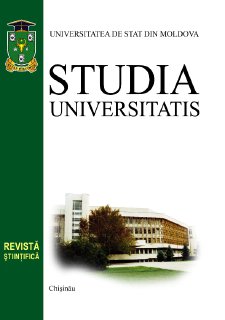THE UTILIZATION OF ALGAL PRIMARY PRODUCTION BY CONSUMERS IN UPPER TROPHIC LEVELS
Elena ROȘCOV, Ion TODERAȘ, Laurenția UNGUREANU, Daria TUMANOVA, Universitatea de Stat din Moldova
Abstract
The study presents the results of investigations regarding the use of the microalgae species Chlorella vulgaris
Beijerinck 1890 and Oscillatoria amphibia C. Agardh ex Gomont 1892 as a food source for the population of
Paramecium caudatum Ehrenberg, 1834. The results demonstrate how different concentrations of algae cultures
influence the cellular reproduction parameters in Paramecium caudatum. Low concentrations of Chlorella vulgaris
stimulate growth, while high concentrations of Oscillatoria amphibia have a negative effect on the paramecia
population. Chlorella vulgaris can be effective in small doses to stimulate growth and short-term productivity, while
Oscillatoria amphibia, in high concentrations, can negatively impact reproduction and cell division. The importance
of these findings lies in understanding the use of algae as a food source for ciliates, with implications for the ecological
status of aquatic ecosystems and the health of protozoan populations.
Keywords: microalgae, Chlorophyta, Chlorella vulgaris, Cyanophyta, Oscillatoria amphibia, Paramecium
caudatum, population density, reproduction rate.
The study presents the results of investigations regarding the use of the microalgae species Chlorella vulgaris
Beijerinck 1890 and Oscillatoria amphibia C. Agardh ex Gomont 1892 as a food source for the population of
Paramecium caudatum Ehrenberg, 1834. The results demonstrate how different concentrations of algae cultures
influence the cellular reproduction parameters in Paramecium caudatum. Low concentrations of Chlorella vulgaris
stimulate growth, while high concentrations of Oscillatoria amphibia have a negative effect on the paramecia
population. Chlorella vulgaris can be effective in small doses to stimulate growth and short-term productivity, while
Oscillatoria amphibia, in high concentrations, can negatively impact reproduction and cell division. The importance
of these findings lies in understanding the use of algae as a food source for ciliates, with implications for the ecological
status of aquatic ecosystems and the health of protozoan populations.
Keywords: microalgae, Chlorophyta, Chlorella vulgaris, Cyanophyta, Oscillatoria amphibia, Paramecium
caudatum, population density, reproduction rate.
v
The study presents the results of investigations regarding the use of the microalgae species Chlorella vulgaris
Beijerinck 1890 and Oscillatoria amphibia C. Agardh ex Gomont 1892 as a food source for the population of
Paramecium caudatum Ehrenberg, 1834. The results demonstrate how different concentrations of algae cultures
influence the cellular reproduction parameters in Paramecium caudatum. Low concentrations of Chlorella vulgaris
stimulate growth, while high concentrations of Oscillatoria amphibia have a negative effect on the paramecia
population. Chlorella vulgaris can be effective in small doses to stimulate growth and short-term productivity, while
Oscillatoria amphibia, in high concentrations, can negatively impact reproduction and cell division. The importance
of these findings lies in understanding the use of algae as a food source for ciliates, with implications for the ecological
status of aquatic ecosystems and the health of protozoan populations.
Keywords: microalgae, Chlorophyta, Chlorella vulgaris, Cyanophyta, Oscillatoria amphibia, Paramecium
caudatum, population density, reproduction rate.


